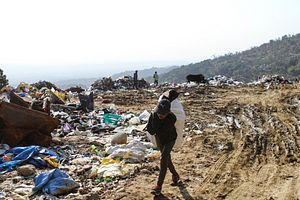DHARAMSHALA, India — “Malaria is on the rise and we can’t bear the infestation of mosquitoes. My produce has gone bad and we fall sick because of the polluted water,” complains 59-year-old Simlo Devi, pointing at a huge dumping site. At the entrance of her town, Sudher, a growing junkyard threatens its 1,500 villagers. Rains seep muck into its water bodies and in the dry season, heaps of solid waste catch fire as they did last June.
“Illegal dumping has happened for decades, but it’s grown in the last three years,” Devi says.
In 2015, Sudher’s neighboring town of Dharamshala — known worldwide as the Dalai’s Lama home base — was appointed one of the hundred “smart cities” that the Indian government vowed to create by 2022. Joint public-private funds totalling $300 million are expected to provide the city with uninterrupted power, water supply, Internet, eco-friendly facilities and modern services for its 70,000 residents and the 15,000-odd tourists who visit this scenic hilly enclave in the north Indian state of Himachal Pradesh, at the foothills of the Himalayas.
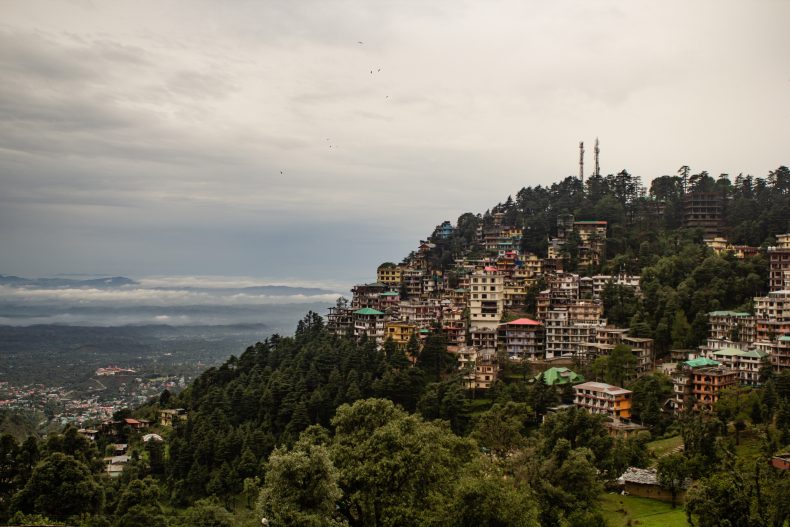
A $300-million-investment is expected to provide the Dharamshala -worldwide known as Dalai’s Lama home base- with and modern facilities for its 70,000 residents and the 15,000-odd tourists who visit this scenic hilly enclave in the north Indian state of Himachal Pradesh, at the foothills of the Himalayas.
The urban planning brought adjacent areas, like the backpacking district of McLeodgunj, under the jurisdiction of Dharamshala Municipal Corporation (DMC); multiplying both its residents and needs. Since the project began, Sudher’s villagers have protested that increasing garbage disposal has worsened the stench and hazards stemming from an illegal landfill site located halfway between their village and Dharamshala. Despite the large budget that was allotted to improve the city’s waste management services, the pile of garbage at the site has grown.
Pricey high-tech amenities have been installed to process dirt and debris, but untreated trash is still disposed in the dump site. The waste is ultimately segregated — under unsafe working conditions — by rag-picketers who had been evicted from the center of Dharamshala, where modern entertaining facilities will be built.
Many other Indian municipalities selected as part of the Smart City Project follow the same model of development, prompting activists to question whether this nation-wide mammoth scheme will only beautify enclaves for the benefit of a few without addressing the real needs of the wider population.
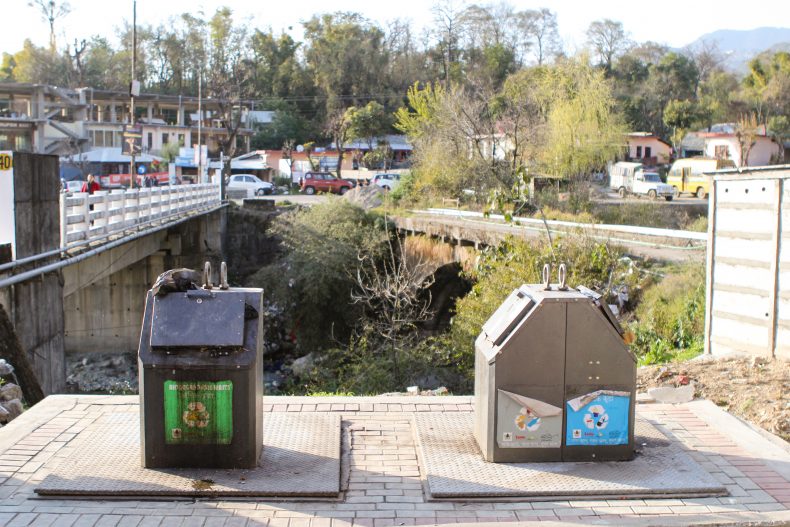
Authorities have spend millions of dollars in high-tech smart bins and a new waste disposal project. But the system doesn’t work and the city’s garbage, untreated, is still illegally dumped in a junkyard. Photo by Angel L. Martínez Cantera.
Unprocessed Waste and Million-Dollar Smart Bins
While schemes worth $17 million are still at the tendering stage, Dharamshala is engaging in a new waste disposal project. Like Bangalore and Dehradun, the DMC invested $7 million in 70 smart bins (with over 200 planned) and up to $79,000 in special crane-mounted trucks. Equipped with twin underground chambers for bio and non-biodegradable waste, each bin is fitted with sensors that send out alerts to the trucks when it gets full. A cutting-edge technology of little use because there is no segregation of waste at the household or commercial level.
“Bins aren’t cleared and only one truck operates so most of the waste is still collected old-school and dropped onto the landfill. Since the garbage is largely unsegregated, the scope for recycling or composting is limited,” explains 29-year-old social worker Ramanathan Sundararaman. Locals also claim that many bins collapsed, their underground concrete structures caved in due to the hilly terrain and a lack of consideration for drainage in an area that sees heavy rainfall. Meanwhile, the city waste ends up — unprocessed — in Sudher’s junkyard.
“I’m spending my savings in treating my skin problems because of pollution. One of my cows fell sick and I can’t work the fields because my only ox died. How am I supposed to survive?” asks 41-year-old milkmaid Anurada; unable to sell her produce and concerned about her crops — irrigated by the upstream water from the site. Last October, Anurada and 30 more housewives from Sudher formed Bhageshwari Mahila Mandal to protest against the health hazards due to illegal dumping, dead cattle and burning plastic in the dump site.
Following their complaint of a violation of the Solid Waste Management Rules 2016, the National Green Tribunal directed the DMC and the state pollution authorities to look into the matter in January. There is also an inoperative solid waste shredding plant at the junkyard. Installed a decade ago, it lies in forest land activists say. Meanwhile, the local news refers to this scheme as “the underground dustbin scam,” reporting that local officials may get illicit commissions from purchasing these pricey facilities in bulk.
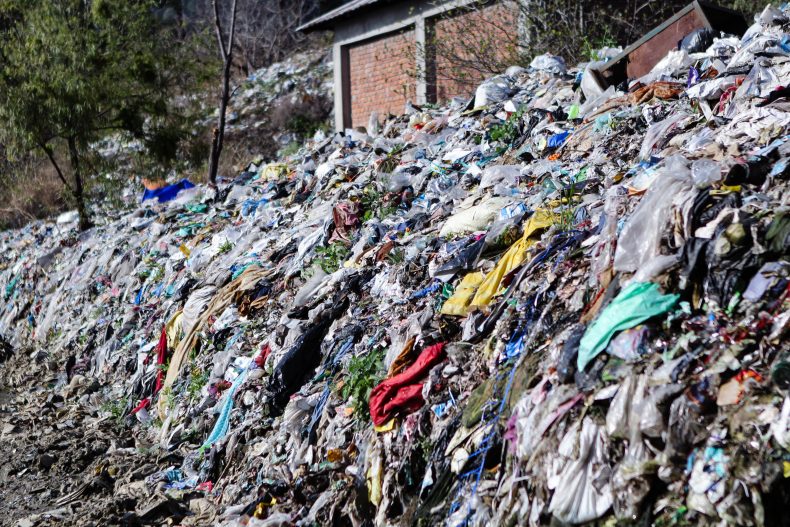
Midway between Dharamshala and small village of Sudher, the dumping site threatens the health of the 1,500 villagers. Photo by Angel L. Martínez Cantera.
Evicting Slum-Dwellers to Beautify the City
Despite the existing smart bins, the segregation of trash is still conducted manually in the landfill. “The administration pays 6,000 rupees [$83.5] a month for me to do what my family did for generations: sweep, clean and deal with garbage,” says 27-year-old rag-picketer Suni Ashok, whose job agreement states his entitlement to holidays, safety equipment and livable housing. But none of these are provided to Ashok who, instead, was forcefully evicted from his home with other 80 sanitation workers.
For more than two years, more than 500 people have struggled in shattered tarpaulin huts next to a stream prone to flooding during monsoon in Chetru, in the outskirts of Dharamshala. “After the eviction, I slept in the rainy roadsides for a month. Nobody could take care of me,” says 31-years-old Shyam. Paraplegic, he waits inside a ripped tent for drinking water to be fetched by one of his children.
In June 2016, the authorities of Dharamshala removed about 1,500 migrant workers from their slum in the city’s central area of Charan Khad. “Police broke in with sticks; destroyed our belongings, beat and kicked us out,” recalls 46-year-old Sumita. Later, the eviction was described as “inhumane” by a fact-finding report conducted by Women Against Sexual Violence and State Repression (WSS) and the Delhi Forum.
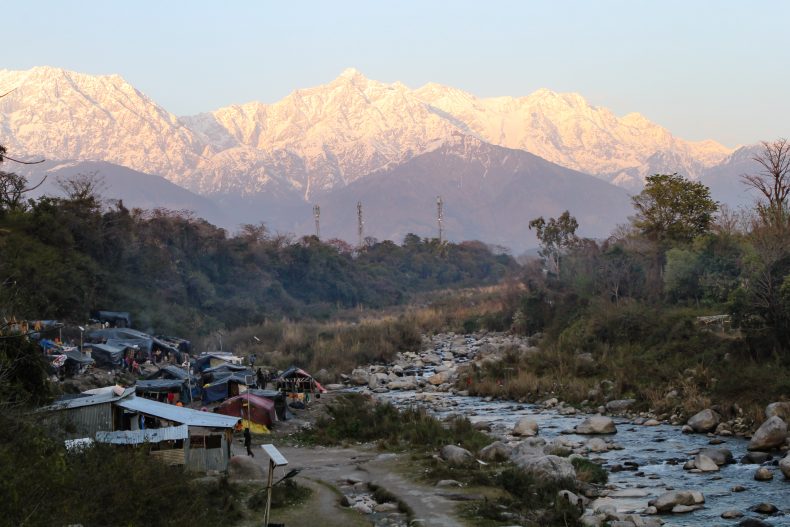
In order to build modern facilities under the Smart City Project, authorities forcefully removed a community from their slum in Dharamshala’s central area of Charan Khad. Ever since, around 1,500 people live in tarpaulin huts next to a stream prone to flooding in city’s the outskirts. Photo by Angel L. Martínez Cantera.
Although this community had lived in the central area slum for over 30 years, their shelters were demolished following a High Court order alleging “public hazard” concerns. Activists, however, claim that open defecation — a widespread problem in India — can’t be a reason for displacing more than a thousand people without a rehabilitation plan.
“The DMC didn’t talk to them, carried out a water sample or a health survey,” says 41-year-old Manshi Asher, member of Endangered Himachal, an environmental group that gives legal advice to evicted families. “They were not removed due to ‘public hazard’ concerns, but because of other interests.” Asher adds that Tong-Len Charitable Trust that treated dwellers’ health for over half a decade never reported any sanitary-related issue.
Later it was found that the area, adjacent to the cricket stadium and in a prime location, was selected to host a Botanical Garden under the Smart City Project. Former Commissioner of the DMC Lalit Jain, however, denied the connection. “The eviction happened because they were encroaching land,” he said, adding that families were given alternative houses. Nearly 150 flats intended for the poor and worth $1.5 million are being built next to the stadium. However, none have been offered to the evicted families from Charan.
A local newspaper, The Tribune, reported that the DMC cut the power of illegally built hotels, thus proving different action criteria depending on the nature of the illicit occupants. “Guest houses and business throw garbage to the stream too. If the issue was open defecation, they could have given us toilets,” says 45-year-old shoe-shiner and former slum-dweller Rajesh Kumar, who confirms they were never offered housing.
Dharamshala isn’t an isolated case. Campaigners claim that 50,000 people were evicted in Bhubaneswar (Odisha) and demolitions left 1,200 families homeless in Indore (Madhya Pradesh). Bhanu Joshi, analyst at the Centre for Policy Research (CPR), stated that some of the elected smart cities plan to spend over 70 percent of funds in order to benefit a mere 4 percent of the population; leaving behind the most disadvantaged.
A report by Housing and Land Rights Network (HLRN) questions whether the $7.5 billion national plan really addresses the needs of people: “Half of the world’s most-polluted cities are in India, one in six urban residents lives in an inadequate settlement, a third of the urban population does not have access to tap water […] the critical question is whether the country should first focus on creating 100 high-tech urban enclaves.”
“We are not criminals but just citizens,” claims 23-year-old Sunny Shinde. Born and brought up in Charan Khad, Sunny studies tourism at the university and dreams to open an inclusive business in Dharamshala. “If they want to develop modern cities, why don’t they also count on the poor?”
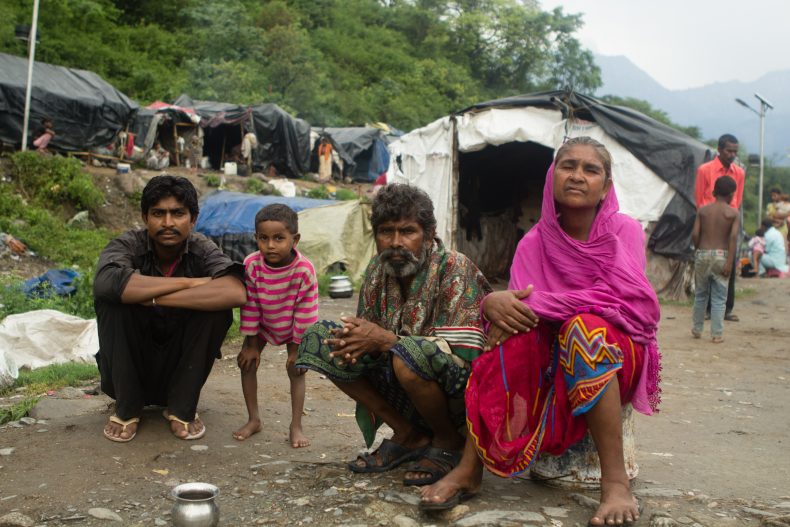
Authorities also said that families were given alternative housing. However, none of them have been selected as beneficiaries fo the nearly 150 flats intended for the poor built next to their settlement. Photo by Angel L. Martínez Cantera.
Angel L. Martínez Cantera is a Spanish freelance photojournalist based in Asia since 2013. He has an MA in international politics from City University of London (UK) and specializes in human rights and development.













